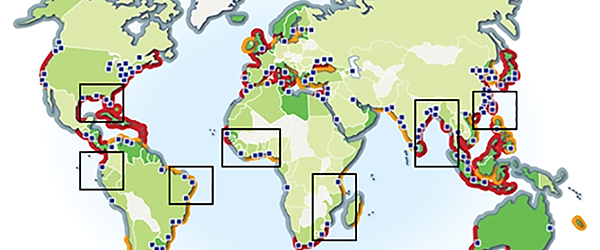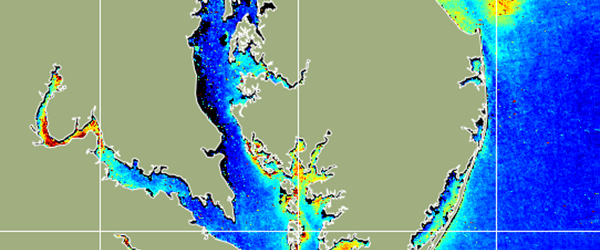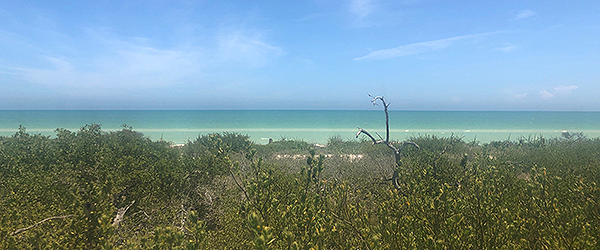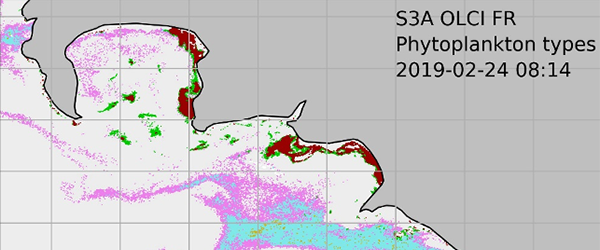PACE Applications Partners & Early Adopters
The PACE Applications Partner program works with individuals and groups to accelerate the translation of PACE observations into action with direct economic, health, and other benefits to society. Partnerships specifically amplify applied research efforts that are designed to scale and integrate PACE data into policy, business, and resource management activities.
Who are Partners?
Applications Partner Criteria
PACE Applications Partner & Early Adopters are groups and individuals who:- Have a direct, clearly-defined need for PACE ocean color, aerosol, cloud or polarimetry data;
- Have an existing application or new ideas for novel PACE-related applications that directly benefit society;
- Currently work with application stakeholder, decision-maker, manager, or other type of end user(s) and can describe their decision-making process;
- Have an interest in utilizing a PACE product;
- Can apply their own resources (personnel, tools, funding, facilities, etc.) to demonstrate the utility of PACE data for their particular system or model; and
- Early Adopters meet all the criteria above AND joined the program during PACE's pre-launch phase (prior to February 2024) or the first year post-launch (prior to February 2025).
Applications Partner Benefits
In addition to the benefits listed as part of the Community of Practice (CoP), Partners also receive:- Direct support from PACE Science and Application Team (SAT) and/or Project Science (ProjSci): after acceptance into the program, you will be teamed with a SAT member and/or Project Science member(s) to receive guidance and support on the functionality of the PACE data products.
- PACE web presence, project promotion, and advocacy at external events: after acceptance, the Applications Team will create a web profile highlighting each Partner's practical application and how it supports decision-making, public health, and society. Specific Applications Partners projects will be promoted via multiple venues.
Interested in Joining?
Join our growing list of Partners who are engaged with the PACE Project! If you meet the criteria above and are interested in a partnership with PACE Applications, please fill out our application. Applications are reviewed approximately quarterly on a rolling basis. If you have any questions about the application submission and review process, please reach out to [email protected].
Applications Partners & Early Adopters
Learn about the real-world projects making a difference with PACE data by reading our Applications Partners and Early Adopters profiles below.


Madhusudan Anand
India & Global Micro Air Quality & Pollen Monitoring & Alerting System »


Clarissa Anderson
Applying PACE products to the California Harmful Algae Risk Mapping (C-HARM) System »


Jordan Borak
Mapping wetland vegetation parameters with PACE's Ocean Color Instrument »


Damian Brady
Aquaculture site prospecting: Applying PACE products to sustainable aquaculture site selection »


Dustin Carroll
Data-assimilative, global-ocean ECCO-Darwin biogeochemistry model »


Emil Cherrington
Integration of Hyperspectral Imagery and Spaceborne LiDAR Data for Updated Mapping of the Ecosystems in the Mesoamerican Biological Corridor »


Sebastian Diez
Improving Air Pollution Exposure Insights in Latin America Through PACE Data Integration »


Hunter Erickson
Managing environments in the palm of your hand »


Elizabeth Ferguson
Coastal and offshore Oregon marine mammal ecological study »


Joaquim Goes
Decision and Information System for Coastal waters of Oman (DISCO) - an integrative tool for managing coastal resources experiencing climate change »


Heather Holmes
Modeling spatial and temporal exposure to air pollution in the western U.S. »

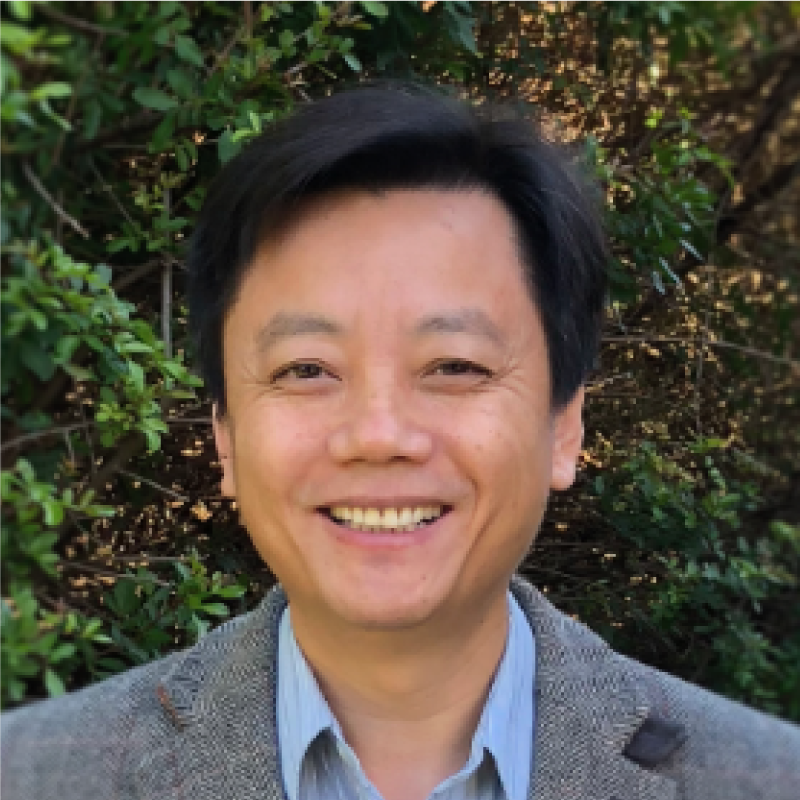
Chuanmin Hu
Detecting and differentiating oil slicks through PACE measurements »


Jason Jolliff
Ocean colorimetry with PACE »


Antar Jutla
Predictive assessment of clinically active biothreats in coastal and ocean waters using PACE data »


Veronica Lance
Satellite data products and services for managing our oceans and coasts - NOAA CoastWatch »


Moritz Lehmann
Harmful algal bloom detection and monitoring in the inland and coastal waters of New Zealand »


Bingqing Liu
Assessing the potential impact of a changing climate on the water quality of northern Gulf of Mexico »
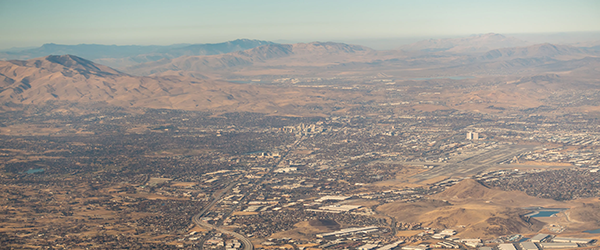

S. Marcela Loría-Salazar
Toward understanding the effect of aerosols on regional weather and human health in the southern Great Plains »


Fernanda Maciel
Suspended sediment characterization and cyanobacteria detection in the Río de la Plata Estuary »


Marina Marrari
Near real time satellite data distribution platform for Central America: Monitoring and fisheries applications (pezCA) »


Michael Ondrusek
Development and assessment of a hyperspectral Total Suspended Matter (TSM) algorithm for PACE »
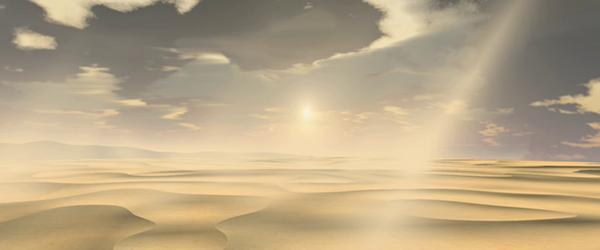

Mariusz Pagowski
Assessing potential of PACE aerosol products for data assimilation »


Lachlan Phillips
Innovative Pre-Training Strategies for Water Quality Deep Learning Models Using Simulated PACE Hyperspectral Imagery »


Anastasia Romanou
Shifts in biodiversity and linkages to ecosystem health and food security »

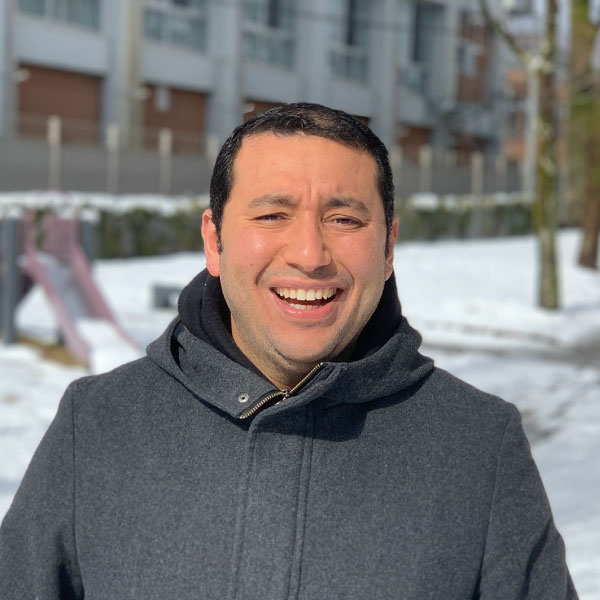
Salem Ibrahim Salem
Harmful Algal Bloom (HAB) and red/blue tide Detection and modeling for coastal and inland waters in Asia »


Marié Smith
Hyperspectral satellite radiometry for HAB and phytoplankton functional type identification in support of South African marine industries »


Richard Stumpf
Discriminating algal blooms in turbid coastal, estuarine and large lake environments »


Daniel Tong
Satellite retrievals of marine aerosols and trace gases emissions »


Vardis Tsontos
Applying PACE products to Earth Observation (EO) Applications and Oceanographic Data Management- CEOS COVERAGE »


Jessica Turner
Water clarity and particle size from hyperspectral remote sensing reflectance in the Chesapeake Bay »


Mortimer Werther
Hyperspectral satellite remote sensing for monitoring and assessing Swiss lake aquatic ecosystem health »















